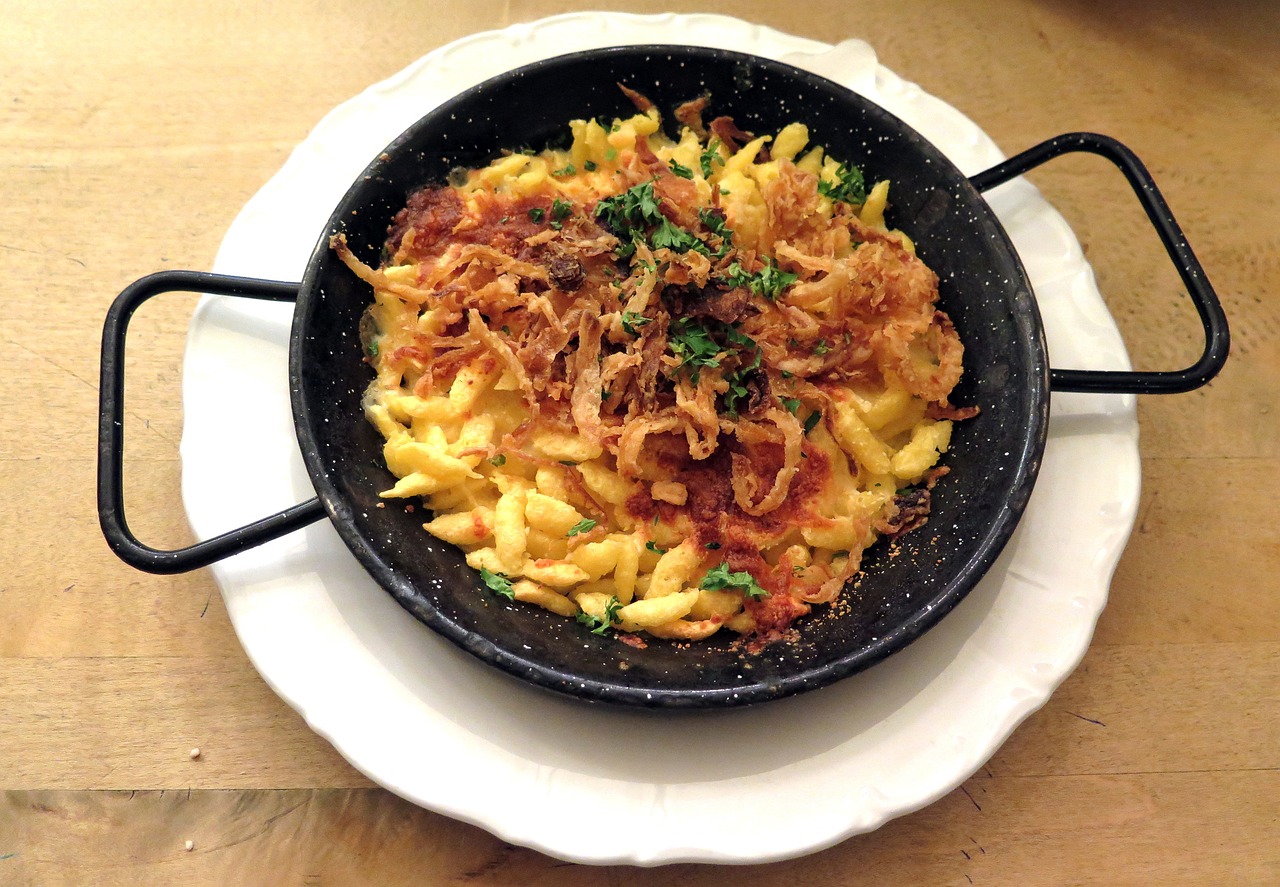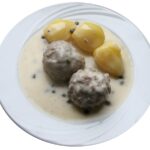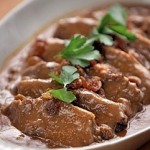
When it comes to comfort food, few dishes can rival the heartwarming embrace of German Spaetzle. These delightful little egg noodles are a staple in Southern German cuisine and have charmed their way onto dinner tables around the world. Making Spaetzle at home is not only simple but also incredibly rewarding. Whether you’re pairing it with a rich meaty gravy or simply tossing it in butter, this easy homemade German Spaetzle recipe will bring a touch of authentic Gemütlichkeit to your meal.
Ingredients:
- 2 cups all-purpose flour
- 4 large eggs
- 1/2 cup milk (or water, for a lighter version)
- Salt, to taste
- Nutmeg, a pinch (optional but traditional)
- 2 tablespoons unsalted butter (for tossing the cooked Spaetzle)
- Fresh parsley, chopped (for garnish)
- Additional salt and pepper, to taste
Kitchen Tools:
- Spaetzle maker or a colander with large holes
- Large pot for boiling water
- Slotted spoon
- Large bowl
- Skillet (if you wish to sauté the Spaetzle)
Instructions:
Step 1: Prepare the Spaetzle Dough
In a large bowl, combine 2 cups of all-purpose flour, a pinch of salt, and a dash of nutmeg. In another bowl, whisk together the 4 eggs and 1/2 cup of milk until well blended. Gradually pour the egg mixture into the flour, stirring continuously. The goal is to achieve a smooth, thick batter. If it’s too stiff, add a little more milk; if it’s too runny, sprinkle in some extra flour. Let the batter rest for about 15-30 minutes; this allows the gluten in the flour to relax, which will result in tender Spaetzle.
Step 2: Boil the Water
While the batter is resting, fill a large pot with water, add a generous amount of salt, and bring it to a boil. The salt is not just for flavor—it also helps to firm up the Spaetzle as they cook.
Step 3: Shape the Spaetzle
Once the water is boiling, place your Spaetzle maker or colander over the pot. Pour a portion of the batter into the Spaetzle maker or colander and push the batter through the holes into the boiling water using a spatula or the back of a spoon. The Spaetzle will cook quickly, so work in batches to avoid overcrowding the pot.
Step 4: Cook the Spaetzle
The Spaetzle are done when they float to the surface of the water, which typically takes about 2-3 minutes. Use a slotted spoon to transfer them to a colander and briefly rinse under warm water to prevent sticking. Continue until all the batter is used.
Step 5: Sauté the Spaetzle (Optional)
For an extra touch of flavor, melt 2 tablespoons of unsalted butter in a skillet over medium heat. Add the boiled Spaetzle and toss them until they’re golden and a bit crispy around the edges. Season with salt and pepper to taste.
Step 6: Garnish and Serve
Transfer the Spaetzle to a serving dish, sprinkle with fresh parsley, and serve hot. Spaetzle makes a fantastic side dish to meats and stews, or it can be enjoyed as a main dish with a variety of sauces and toppings.
Tips for Perfect Spaetzle:
- Consistency is Key: The batter should be viscous enough to slowly drip through the holes of the Spaetzle maker. If it’s too thin, the Spaetzle will be soft; too thick, and they’ll be chewy.
- Keep it Hot: Always push the batter into boiling water to ensure the Spaetzle start cooking immediately and maintain their shape.
- Don’t Overcrowd: Cook the Spaetzle in batches to ensure they don’t stick together and have enough room to float to the surface when done.
- Flavor Variations: Feel free to experiment with the Spaetzle batter. Adding pureed spinach, sun-dried tomatoes, or herbs can create beautiful and tasty variations.
Spaetzle is a versatile and comforting dish that’s deceptively simple to make. With this easy recipe, even novice cooks can bring a piece of German tradition to their table. It’s a perfect accompaniment to hearty meats and sauces, yet it can stand proudly on its own with just a sprinkle of cheese or a light dressing of herbs and butter. Spaetzle is not just food—it’s a delightful experience, a humble tradition, and a plateful of homey, German comfort.
By following this straightforward recipe, you’ll soon be enjoying your own homemade German Spaetzle, a dish that’s as fun to make as it is to eat. Prost to your cooking adventures!
Related articles:
15 Best German Christmas Recipes
Mushroom Spätzle Pan
Sauerkraut Cheese Spätzle







